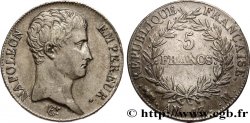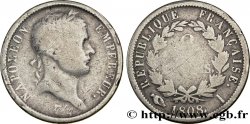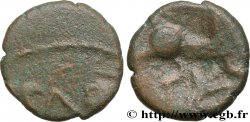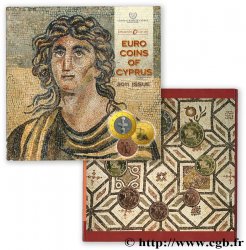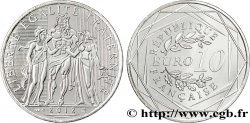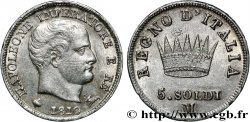E-auction 390-302878 - fme_622994 - NAPOLEON'S EMPIRE Médaillette, Elisa Bonaparte, refrappe
Чтобы принять участие в торгах, вы должны войти в систему и стать подтвержденным участником аукциона. Войдите, чтобы сделать ставку. Ваш аккаунт будет подтвержден в течение 48 часов. Не ждите до закрытия торгов, чтобы зарегистрироваться.Сделав ставку на данный товар, вы вступаете в юридическое соглашение на покупку выбранного товара и нажатием кнопки «Сделать ставку» подтверждаете принятие вами условий интернет-аукционов cgb.fr.
Ставка может бить сделана только в полном эквиваленте евро. Торги закроются согласно времени, указанному в описании товара, все ставки, сделанные после закрытия торгов, учитываться не будут. Не следует откладывать предложение вашей ставки до последнего момента, так как система может не успеть обработать вашу заявку, и ваша ставка не будет принята. Более детальную информацию вы найдёте здесь: FAQ по интернет-аукционам.
БЕСПЛАТНО.
БЕСПЛАТНО.
| Оценить : | 60 € |
| Цена : | 22 € |
| Максимальная предлагаемая цена : | 31 € |
| Конец торгов : | 05 October 2020 19:08:00 |
| Участников : | 6 Участников |
Тип Médaillette, Elisa Bonaparte, refrappe
Дата: n.d.
Металл: silver
Диаметр: 22,5 mm
Ориентация осей монеты: 12 h.
Вес: 7,12 g.
Век: lisse + corne ARGENT
Пуансон: corne ARGENT
Редкость: R1
Комментарии о состоянии
Patine grise hétérogène. Petite usure sur certains hauts reliefs
Лицевая сторона
Аверс: описание: Tête diadémée à l’antique à droite d’Élisa Bonaparte.
Аверс: легенда: ELISA SEBASTOU ADELFH
Аверс: перевод: Elisa, sœur de l’Empereur.
Обратная сторона
Реверс: легенда: VIA DA LUCCA A PISA.
Реверс: Описание: Statue très légèrement couverte d’une femme alanguie signé DENON D. et BRENET F..
Реверс: перевод: Chemin de Lucques à Pise.
Комментарий
Élisa Bonaparte, née Maria-Anna le 3 janvier 1777 à Ajaccio et morte le 6 août 1820 à Villa Vicentina, est une princesse française et altesse impériale (1804) et la sœur de Napoléon Bonaparte.
Élisa est successivement princesse de Piombino et de Lucques, puis grande-duchesse de Toscane. Elle est la seule sœur de Napoléon à avoir possédé de réels pouvoirs politiques. Très intéressée par les arts, notamment le théâtre, elle les encouragea dans les territoires sur lesquels elle régna.
Pour sa biographie passionnante, http://fr.wikipedia.org/wiki/%C3%89lisa_Bonaparte .
Le type de revers s’explique puisqu’elle était princesse de Lucques et qu’elle soutenait la sculpure : Napoléon avait rattaché Cararre et ses carrières de marbre à la principauté de Lucques et Piombino.
Elisa Bonaparte, born Maria-Anna on January 3, 1777 in Ajaccio and died on August 6, 1820 in Villa Vicentina, was a French princess and Imperial Highness (1804) and the sister of Napoleon Bonaparte. Elisa was successively Princess of Piombino and Lucca, then Grand Duchess of Tuscany. She was the only sister of Napoleon to have possessed real political powers. Very interested in the arts, especially theater, she encouraged them in the territories over which she reigned. For her fascinating biography, http://fr.wikipedia.org/wiki/%C3%89lisa_Bonaparte . The type of setback is explained since she was Princess of Lucca and she supported sculpture: Napoleon had attached Cararre and its marble quarries to the principality of Lucca and Piombino
Élisa est successivement princesse de Piombino et de Lucques, puis grande-duchesse de Toscane. Elle est la seule sœur de Napoléon à avoir possédé de réels pouvoirs politiques. Très intéressée par les arts, notamment le théâtre, elle les encouragea dans les territoires sur lesquels elle régna.
Pour sa biographie passionnante, http://fr.wikipedia.org/wiki/%C3%89lisa_Bonaparte .
Le type de revers s’explique puisqu’elle était princesse de Lucques et qu’elle soutenait la sculpure : Napoléon avait rattaché Cararre et ses carrières de marbre à la principauté de Lucques et Piombino.
Elisa Bonaparte, born Maria-Anna on January 3, 1777 in Ajaccio and died on August 6, 1820 in Villa Vicentina, was a French princess and Imperial Highness (1804) and the sister of Napoleon Bonaparte. Elisa was successively Princess of Piombino and Lucca, then Grand Duchess of Tuscany. She was the only sister of Napoleon to have possessed real political powers. Very interested in the arts, especially theater, she encouraged them in the territories over which she reigned. For her fascinating biography, http://fr.wikipedia.org/wiki/%C3%89lisa_Bonaparte . The type of setback is explained since she was Princess of Lucca and she supported sculpture: Napoleon had attached Cararre and its marble quarries to the principality of Lucca and Piombino








 Cообщить об ошибке
Cообщить об ошибке Распечатать страницу
Распечатать страницу Отправить мой выбор
Отправить мой выбор Задать вопрос
Задать вопрос Consign / sell
Consign / sell
 Информация
Информация